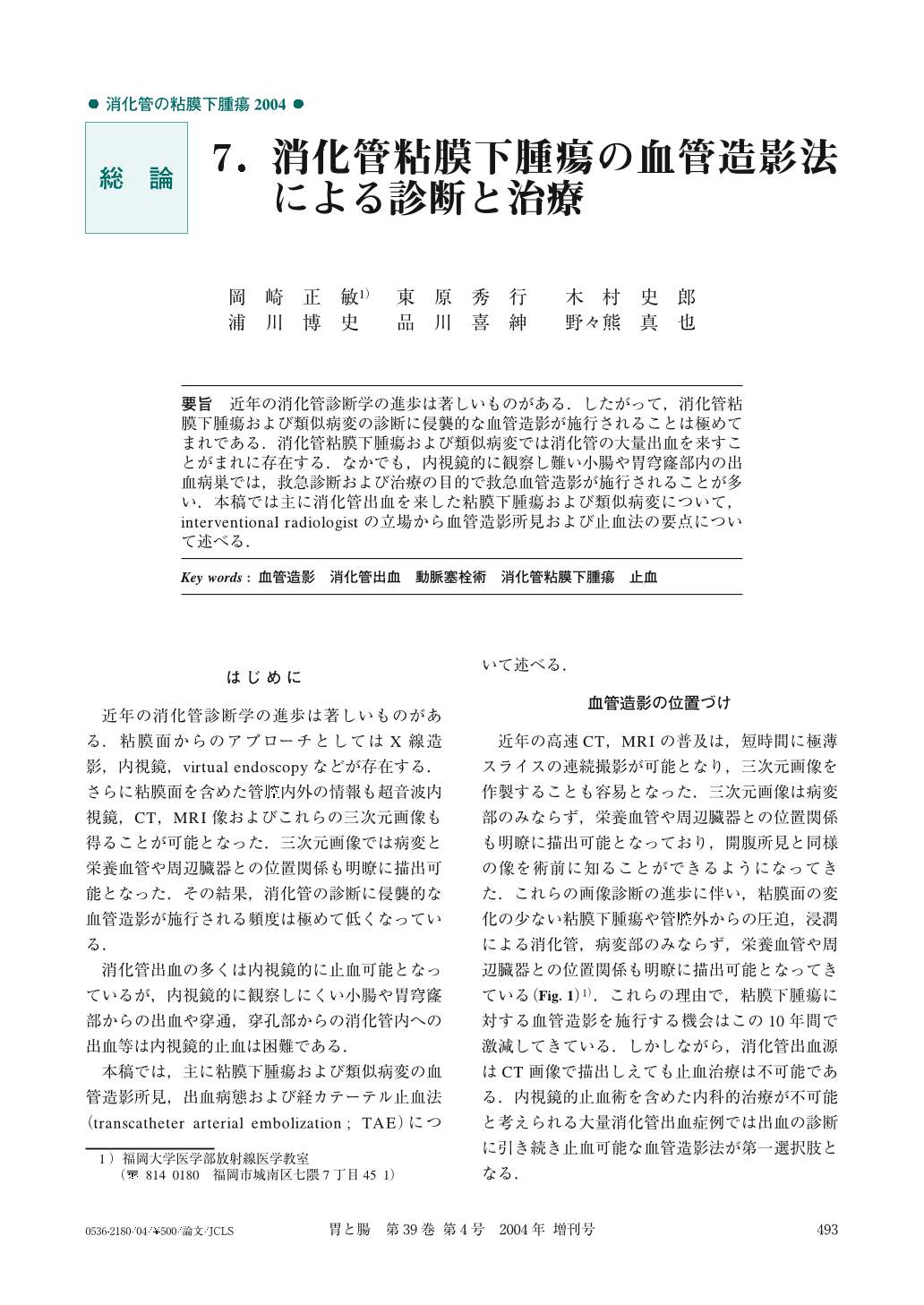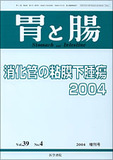Japanese
English
- 有料閲覧
- Abstract 文献概要
- 1ページ目 Look Inside
- 参考文献 Reference
要旨 近年の消化管診断学の進歩は著しいものがある.したがって,消化管粘膜下腫瘍および類似病変の診断に侵襲的な血管造影が施行されることは極めてまれである.消化管粘膜下腫瘍および類似病変では消化管の大量出血を来すことがまれに存在する.なかでも,内視鏡的に観察し難い小腸や胃穹窿部内の出血病巣では,救急診断および治療の目的で救急血管造影が施行されることが多い.本稿では主に消化管出血を来した粘膜下腫瘍および類似病変について,interventional radiologistの立場から血管造影所見および止血法の要点について述べる.
With recent advances in diagnostic technology such as endoscopy, 3-dimensional CT, MRI and endoscopic ultrasonography, precise information over and above histological diagnosis, location and extension of a tumor including submucosal tumor of the alimentary tract, the positional relationship of the tumor and neighboring organs and feeding arteries can be obtained. Therefore, incidence of diagnostic angiography for submucosal tumor of the alimentary tract is very rare. However, these tumors are often difficult to asses, either clinically or endoscopically in cases of massive gastrointestinal hemorrhage from the submucosal tumor, especially in the small intestine and fundic portion. Emergent embolization, a non-surgical and therefore less invasive procedure, has been introduced for controlling GI hemorrhage in these cases. It can be carried out concomitantly with diagnostic angiography and in the emergent situation it may be safer than immediate surgery in patients suffering massive hemorrhage. In this paper, we describe angiographic findings and interventional treatment from the standpoint of interventional radiology in cases with submucosal tumor and similar lesions treated by emergent embolization.
1) Department of Radiology, Fukuoka University School of Medicine, Fukuoka, Japan

Copyright © 2004, Igaku-Shoin Ltd. All rights reserved.


